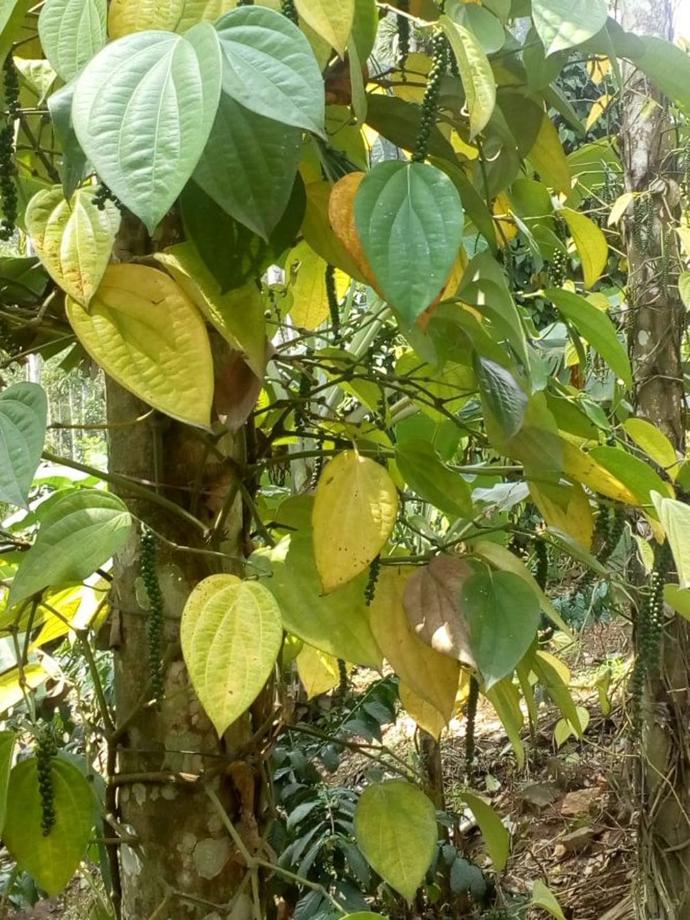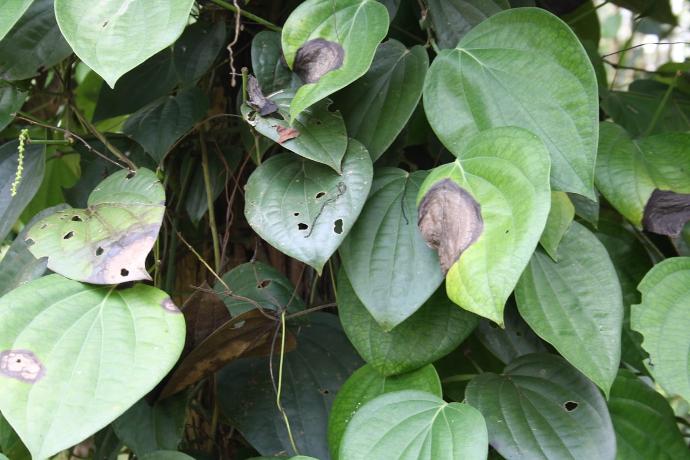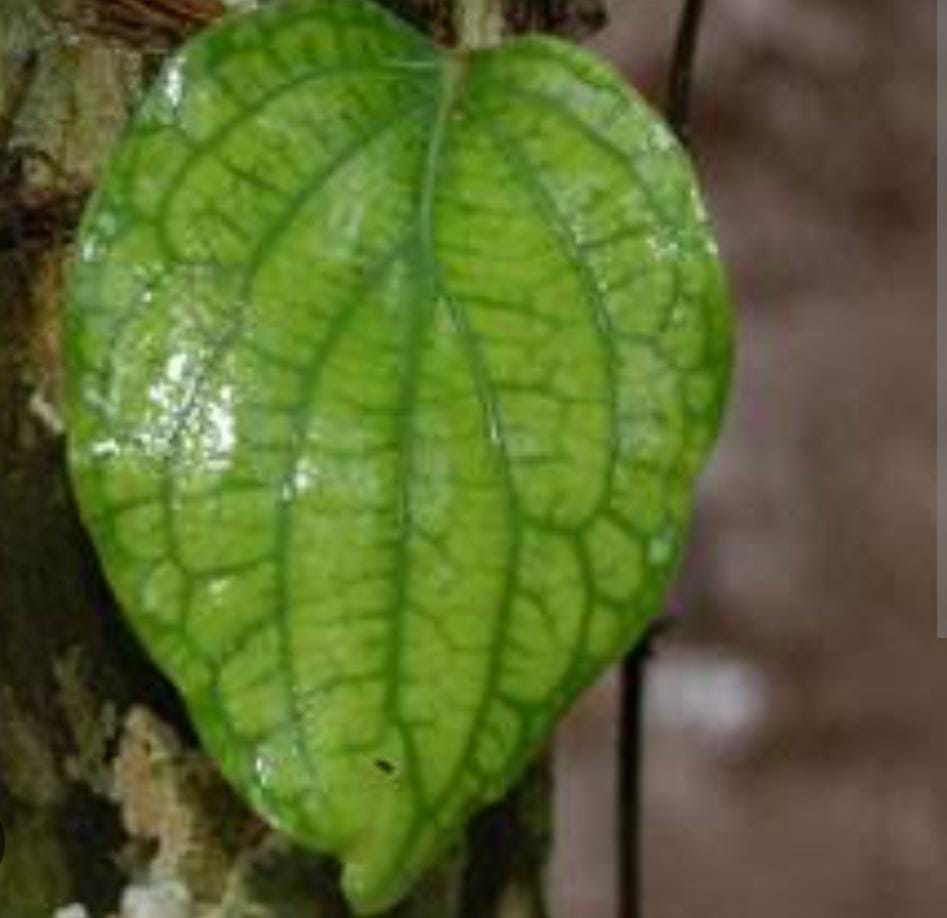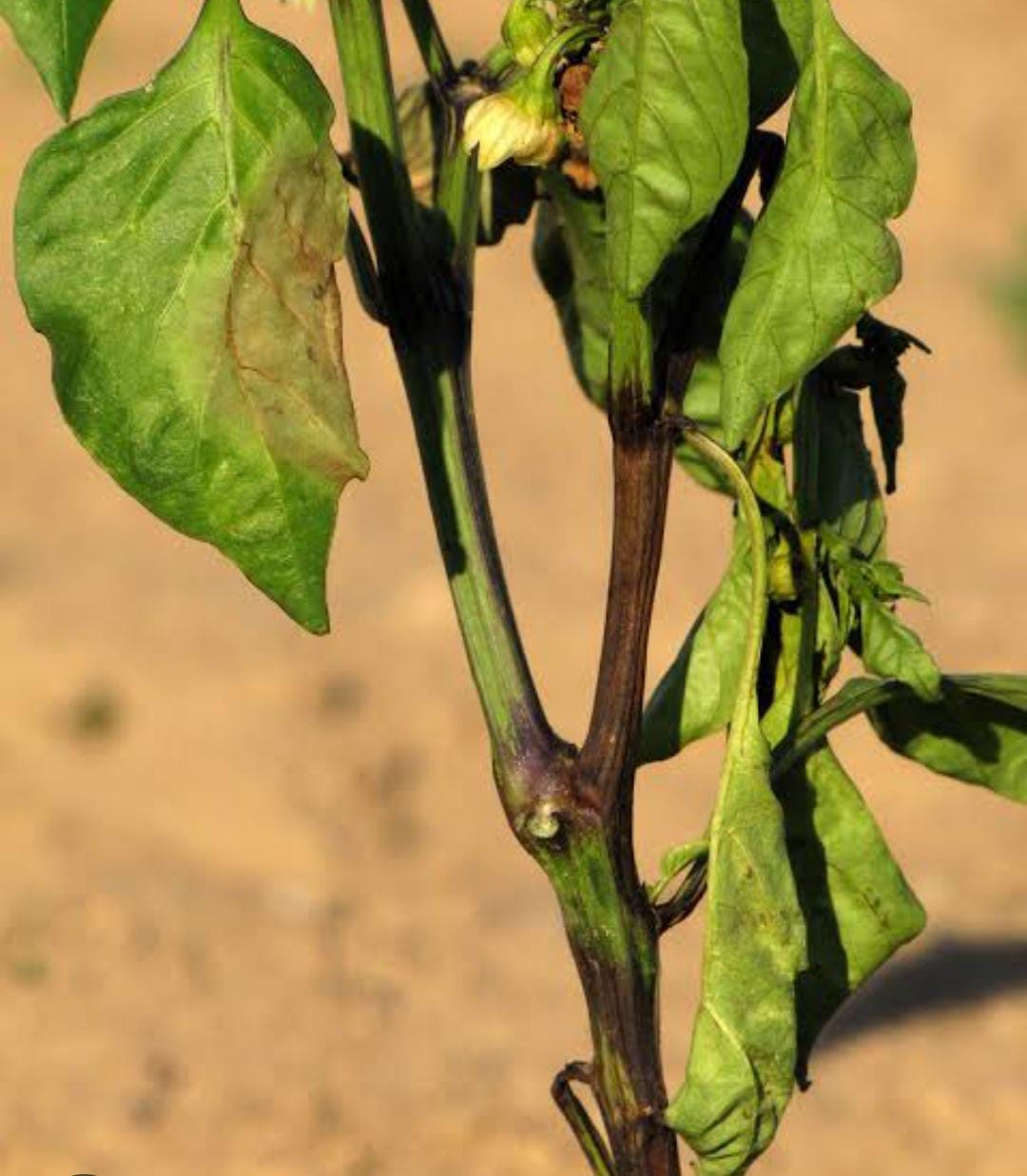Black Pepper Plant
BLACK PEPPER plants thrive in well-draining soil and partial shade. Provide support for climbing vines. Water consistently, especially during dry periods. Prune to control the size and promote bushier growth. Fertilize during the growing season for optimal spice production.
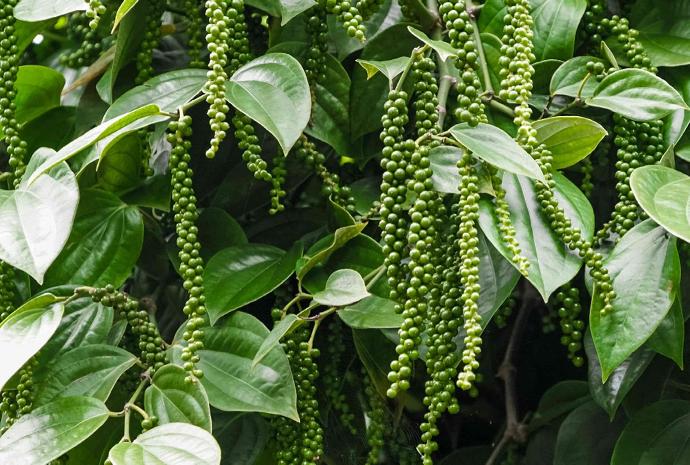
Habit
Vine
Height
5-10 m
Growth
Moderate
Soil
Well Drained, Loamy
Shade
Partial shade to Full Sun
Moisture
Moist
Edible
Yes [Pepper]
Medicinal
Yes
Origin
India, Asia
Climatic Condition
Tropical, Humid
Temperature (°)
25-30°C
Humidity (%)
70-90%
Potting media
Loam + Sand
Fertilizers
Balanced NPK (10:10:10)
Watering
Regular watering
Plant Weight
1-2 kg
Flowering Time
Summer
Soil Ph level
6.0-7.0
Water Ph level
6.5-7.0
Soil EC
1.0 dS/m
Yield Per Plant
9-10 kg berry yield
NPK ratio
10:10:10
life Span
30-50 years
Health Benefits
Spice, digestive aid, anti-inflammatory
Suggested Grow Media or Potting Mix ?
50% loamy soil, 30% compost, 20% sand
Suggested Fertigation/Fertilizers
Fertilize every 2 weeks with a balanced, water-soluble fertilizer.
Common Diseases and Remedies
Phytophthora foot rot, slow wilt.
Rotting, Yellowing of leaves.
Neem Cake, Garlic and Chilly spray.
HEALTH BENEFITS
· Enhances digestion and metabolism.
· Contains piperine, which has antioxidant and anti-inflammatory effects.
· Supports brain health and may improve nutrient absorption.
What Is The Black Pepper?
"Pepper tree" is a misnomer. Black pepper is actually a spice obtained from the dried fruit of the pepper plant, a climbing plant native to India. It is not a tree, but a tree that grows in hot climates. Black pepper fruits are collected and dried to produce black pepper, a spice frequently used in cooking around the world.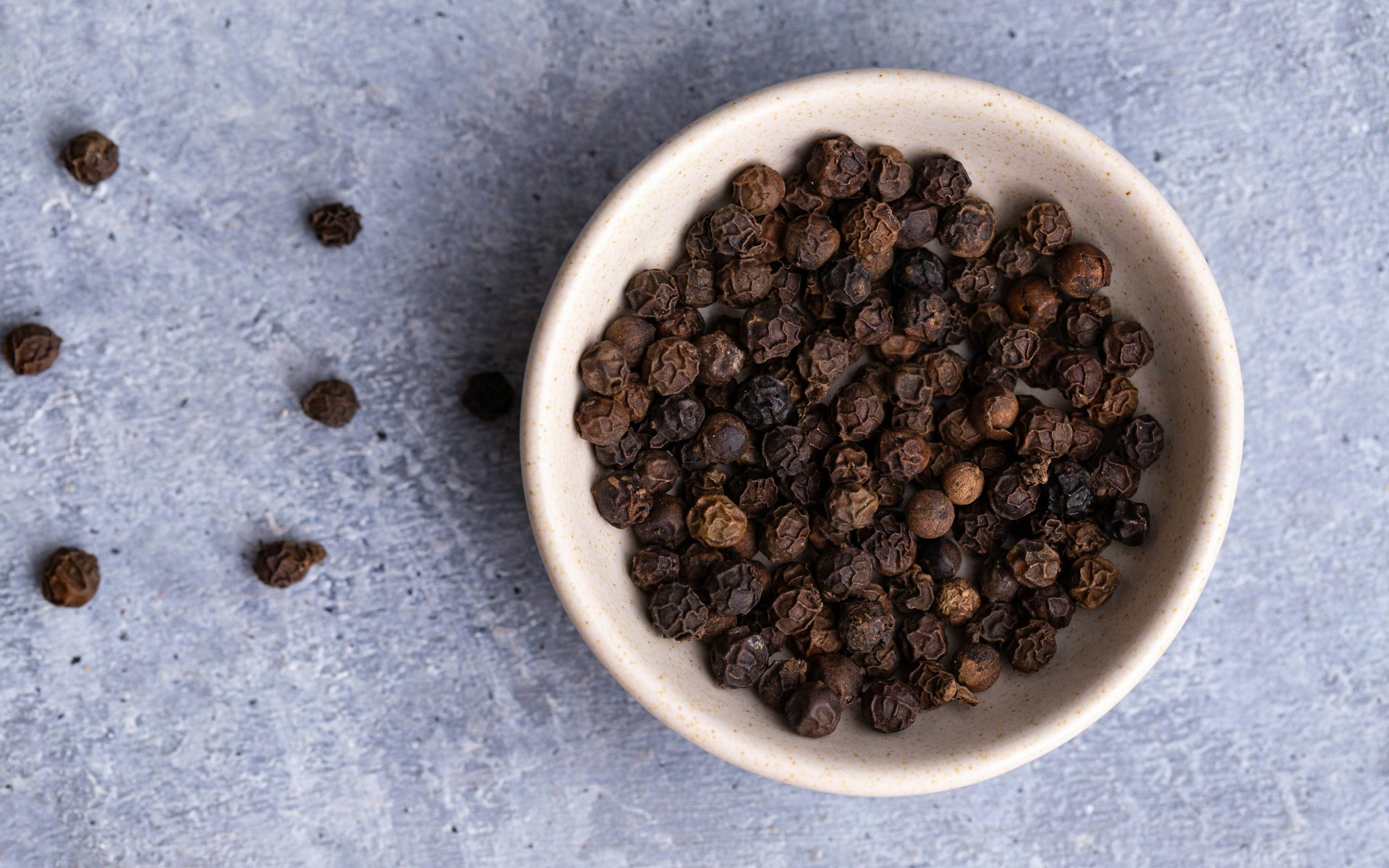
What Are The Different Types Of Black Pepper?
1. Piper nigrum:
It is the most common type of black pepper and is found in India. It produces small, round fruits that produce black pepper when dried.
2. Piper longum:
Also known as long pepper, this black pepper produces long berries that are dried and used as a spice.
3. Shepherd's purse:
Also known as shepherd's purse pepper, this black pepper plant produces small, round fruits that have a slightly different flavor than regular black pepper.
4. Piper guineense:
Also known as West African black pepper, this black pepper is native to West Africa and produces small berries that are dried and used as a spice.
5. Piper Retrofractum:
Also known as Javanese long pepper, this black pepper is native to Indonesia and produces long berries that are dried and used as a spice.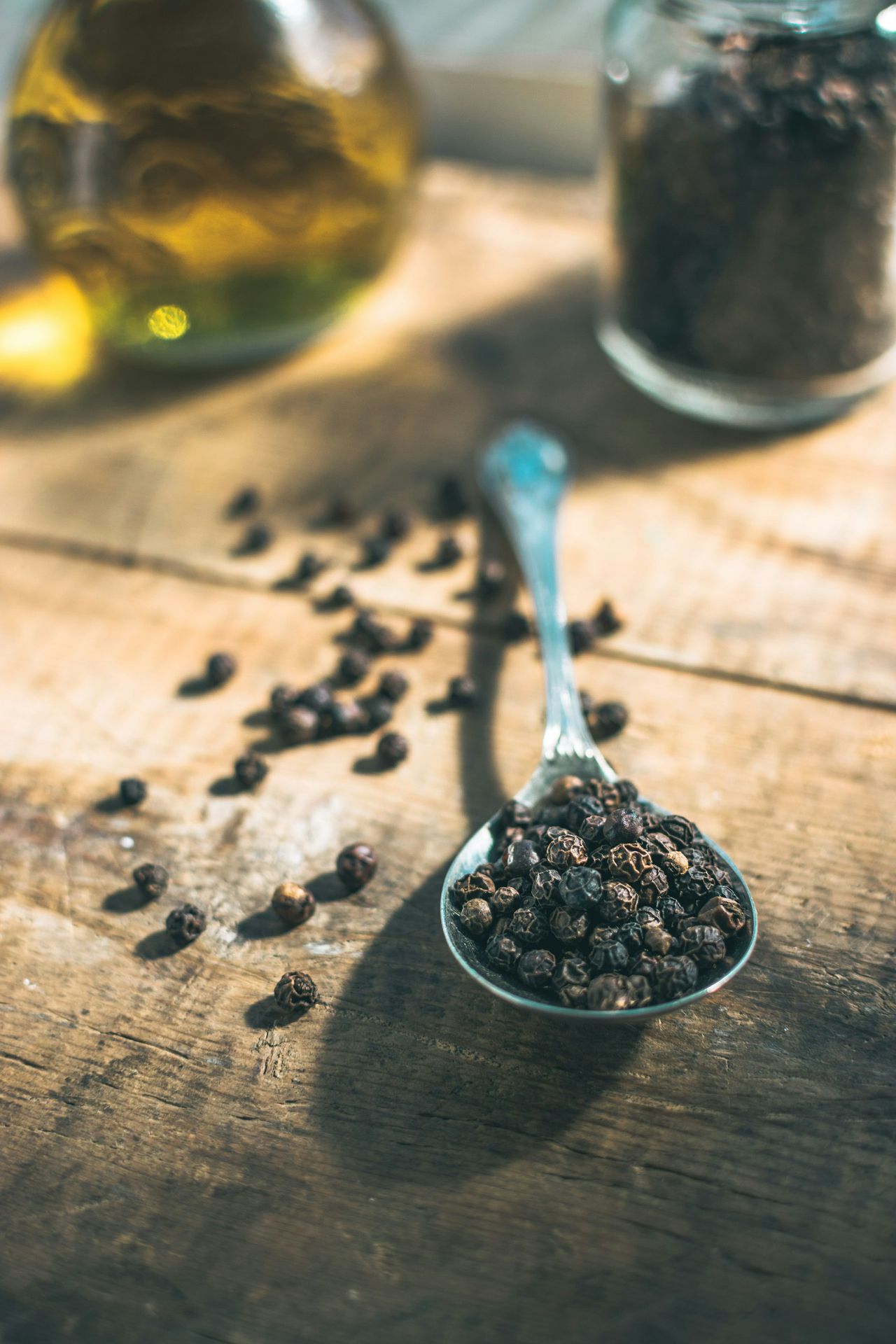
How To Care For Black Pepper?
Location
Black Pepper (Piper nigrum) is native to the Malabar Coast of India but is now grown in many tropical regions around the world. They need a warm, humid climate with temperatures between 24°C and 30°C (75°F and 85°F) and annual rainfall of at least 150 cm (60 inches). They also need good soil with a pH between 5.5 and 6.5. Some of the major black pepper producing countries are India, Vietnam, Indonesia, Brazil and Malaysia.
Sunlight
Black Pepper (Piper nigrum) needs a lot of sunlight to grow and bear fruit. They thrive in full sun, which means they need at least 6 to 8 hours of direct sunlight per day. However, they can tolerate partial shade, especially during the hottest hours of the day. In general, the more sunlight they receive, the better they grow and bear fruit.
Soil
Black pepper plant (Piper nigrum) prefers good, fertile soil with a pH between 5.5 and 6.5. They grow best in soils rich in organic matter and well-drained. Sandy-loam or loamy soil types are ideal for black pepper. It is important that the soil does not become waterlogged or compacted as this will cause root rot and other problems. Adding compost or other organic matter to the soil can help improve soil fertility and drainage.
Hydration
Black pepper (Piper nigrum) needs to be watered well, especially during the growing season. They like normal soil but it is important not to overwater as this can cause root rot. Watering frequency depends on factors such as climate, soil type and growth stage. In general, it is better to water black pepper plants deeply and rarely, allowing the soil to dry out a little from the water. It is also important to water at the base of the plant rather than the top to avoid wetting the leaves, which can cause disease. During the dry season or hot weather, black pepper plants need to be watered more frequently.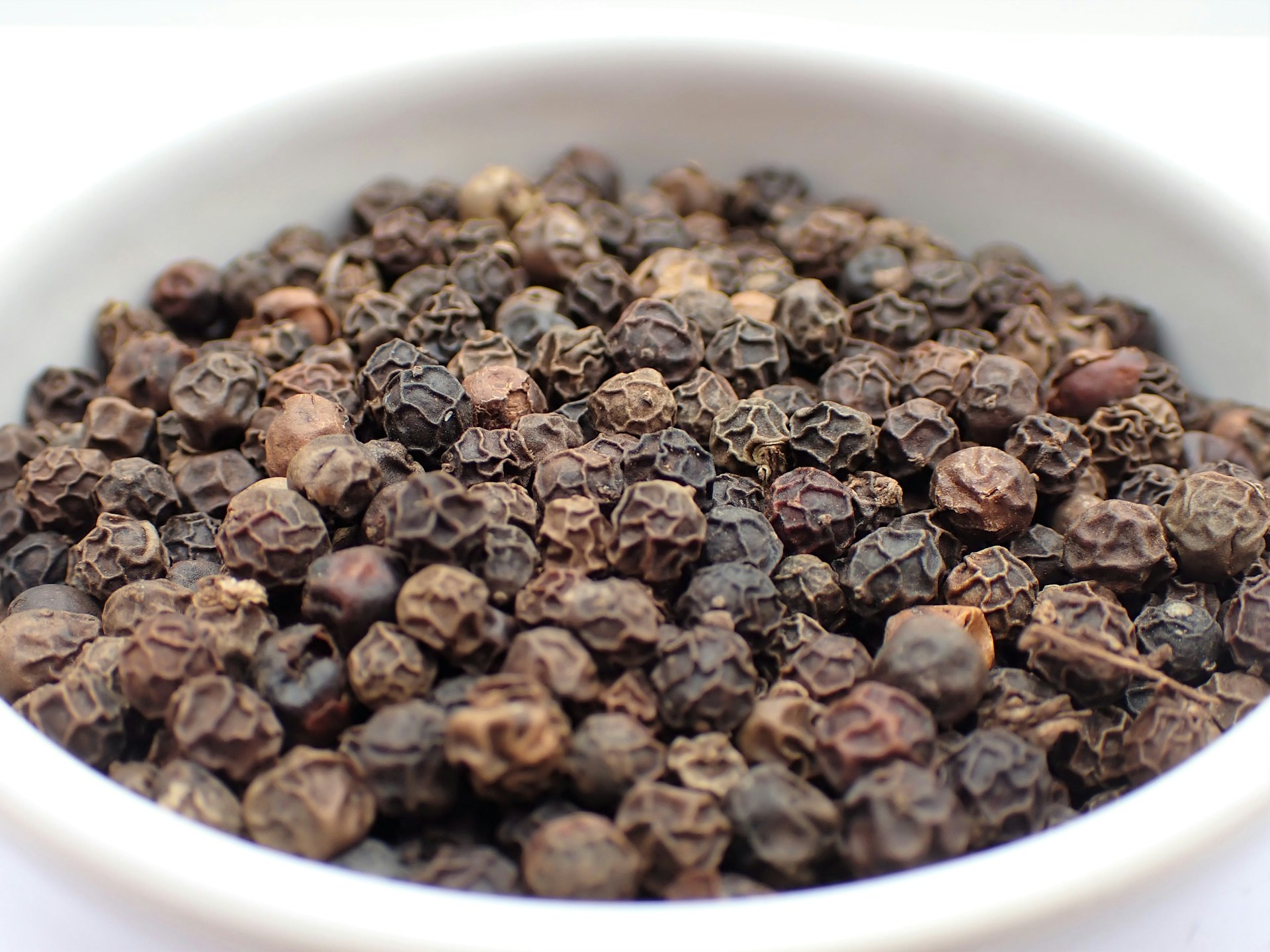
Nourishment
Black pepper plants (Piper nigrum) require regular fertilization to grow and bear fruit. They prefer a balanced fertilizer with the correct balance of nitrogen, phosphorus and potassium (NPK). It is best to use slow-release pills that provide a steady supply of nutrients over time. Fertilization frequency depends on factors such as soil type, weather and growth stage. In general, it is best to fertilize your black pepper every 4 to 6 weeks during the growing season. It is important not to over-fertilize as this can lead to malnutrition and other problems.
Issues
Growing black pepper (Piper nigrum) can be difficult due to several problems:
1. *Pests and Diseases*: Black pepper plants are susceptible to a variety of pests and diseases, including aphids, mites and fungal infections. Regular maintenance and proper pest management are essential to prevent and control these problems.
2. *Climate*: Black pepper plants need a warm climate to grow. They are sensitive to heat and cold, which can damage or kill the plant. In regions where the weather is cold, black pepper should be planted in greenhouses or other protected areas.
3. *Soil and Water*: Black pepper plants should have well-drained, fertile soil with a pH between 5.5 and 6.5. It also needs to be watered regularly to keep the soil moist. Excessive water or waterlogged soil can cause root rot and other problems.
4. *Nutrition*: Black pepper plants need regular fertilization in order to grow and bear fruit. It is important to provide them with a balanced fertilizer that has a balance of nitrogen, phosphorus and potassium (NPK). Overfertilization can lead to malnutrition and other problems.
What are the benefits of Black Pepper?
Black pepper (Piper nigrum) has many benefits:
1. *Culinary Use*: Black pepper is one of the most used spices in the world and adds flavor and heat to many dishes. It can be used directly or in powder form in both salty and sweet dishes.
2. *Medical Uses*: Black pepper has been used in medicine for centuries in the treatment of many ailments. It is thought to have anti-inflammatory, antibacterial and antifungal properties that will help improve digestion and support weight loss
3. *Aromatic Uses: Black pepper has a strong, spicy aroma and can be used in perfumes, soaps and other scents.
4. Financial Benefits: Black pepper is an important crop that provides income and employment in many tropical regions. Other opportunities for farmers and workers.5. Cultural Significance: Black pepper has been used in cooking and medicine for thousands of years and has a rich history. It is often associated with wealth and luxury and is used as a symbol in some cultures.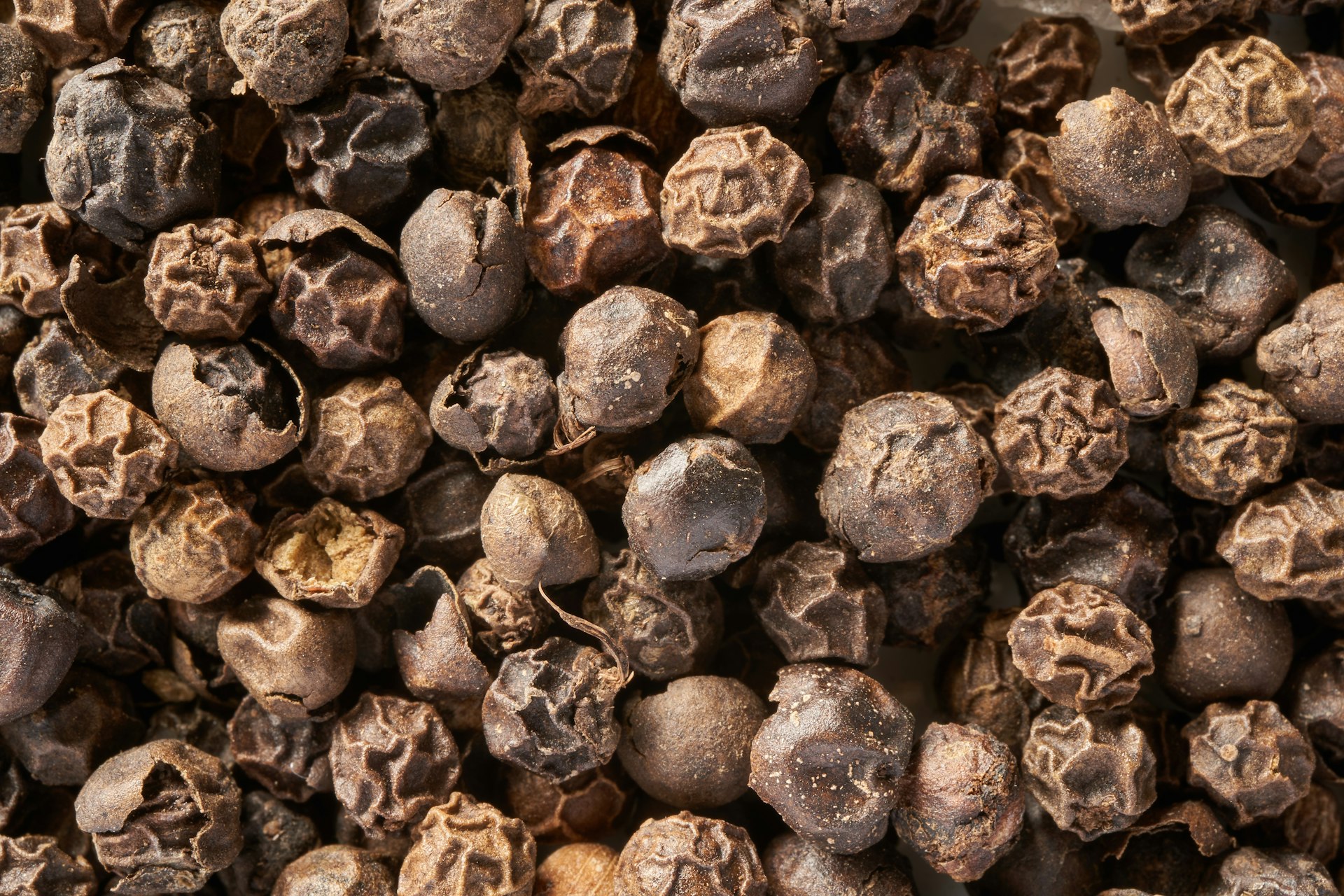
FAQs About Growing Black Pepper
1. How to store black pepper?
Processing black pepper (Piper nigrum) consists of several important steps:
1. Watering: Black pepper plants need to be watered regularly to keep the soil moist. It is important to water the plants deeply and infrequently, allowing the soil to dry slightly between waterings. Avoid overwatering as this can cause root rot.
2. Fertilization: The black pepper plant needs regular fertilization in order to grow and bear fruit. Use a balanced fertilizer containing equal amounts of nitrogen, phosphorus and potassium (NPK). Apply fertilizer every 4 to 6 weeks during the growing season.
2. What are the uses of black pepper?
Black pepper plant (Piper nigrum) has many uses:1. Cooking: Black pepper is one of the most used spices in the world. It is used to add flavor and heat to many dishes, including soups, stews, sauces, marinades and more. It can be used whole or powdered.2. Medical Use: Black pepper has been used in medicine for centuries in the treatment of many ailments. It is thought to have anti-inflammatory, antibacterial and antifungal properties that will help improve digestion and support weight loss.3. Aromatic: Black pepper has a strong, spicy aroma and is used in perfumes, soaps and other scented products.
3. Can black pepper be grown indoors?
Yes, you can grow black pepper (Piper nigrum) at home, but it needs special conditions to thrive. Here's what you need to know:1.
* Light *: Black pepper plants need a lot of sunlight, so place them where they will receive at least 6 to 8 hours of direct sunlight each day. If you don't have a sunny spot, you can use a grow light to supplement natural light.
2. * Temperature *: Black pepper plants prefer warm temperatures of 75°F to 85°F (24°C to 30°C). They can tolerate some cold but are sensitive to frost and wind.3. Humidity: Black pepper plants need high humidity to thrive. If you live in a dry climate, you may need to use a humidifier or spray your plants with water regularly to maintain humidity.
4. What type of pot is best for growing black pepper?
There are a few points to consider when choosing a pot for growing Black Pepper (Piper nigrum):
1. Size: Black pepper plants are very fast-growing climbing vines, so choose a pot large enough to accommodate the growing plant. It is recommended to use a pot with a diameter of at least 12 inches (30 cm).
2. * Materials *: Choose a pot made of durable materials such as plastic, ceramic or terracotta. Do not use pots made of metal or other materials that may corrode or corrode.
5. Where can I buy black pepper?
1. Nursers and Garden Centers: Many nurseries and garden centers grow peppercorns, especially as hot or exotic plants. You can visit the stores in person to see the plants and get advice from the staff.
2. Online stores: There are many online stores that sell black pepper, including Amazon, eBay and specialty herb websites. You can browse their selection and read other customers' reviews before purchasing.
